List of units of the Italian Army

This page lists brigades, regiments, battalions, and other formations and units of the Italian Army since World War II grouped by their administrative corps. Units grouped under their operational headquarters are listed at Structure of the Italian Army.
The units are listed by order of precedence. After the unit's name, the date of foundation i.e. *1624 and the location it is currently based follows. Disbanded units follow below the active units.
Infantry Corps


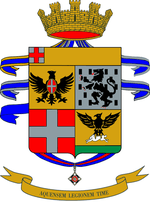
Granatieri
History
The Granatieri (Grenadiers) are the Guard unit of the Italian Army.
Active units
-
 1st Granatieri di Sardegna Regiment, *1659 (Rome)
1st Granatieri di Sardegna Regiment, *1659 (Rome)
-
 1st Mechanized Granatieri Battalion Assietta, *1976-1992
1st Mechanized Granatieri Battalion Assietta, *1976-1992
-
Inactive units
Inactivated units of the Granatieri specialty:
-
 Granatieri di Sardegna Mechanized Brigade, *1831-1934, 1976-2016
Granatieri di Sardegna Mechanized Brigade, *1831-1934, 1976-2016 -
 2nd Granatieri di Sardegna Regiment, *1659-2001
2nd Granatieri di Sardegna Regiment, *1659-2001
-
 2nd Mechanized Granatieri Battalion Cengio, *1976-1992
2nd Mechanized Granatieri Battalion Cengio, *1976-1992
-
-
 3rd Granatieri di Sardegna Regiment, *1659-2002
3rd Granatieri di Sardegna Regiment, *1659-2002
-
 3rd Granatieri (Training) Battalion Guardie, *1976-1992
3rd Granatieri (Training) Battalion Guardie, *1976-1992
-
Fanteria (Infantry)
Active units
Italian Infantry units are named for regions and cities. However the 5th, 13th, 17th, 20th, 21st, 60th, 66th, 67th, 87th, 114th, 120th, and 151st infantry battalions are named for battles, while the 52nd is named for the Alps and the 1st carries the name of Saint Justus of Trieste.
-
 Friuli Division, *1884 (Florence)
Friuli Division, *1884 (Florence) -
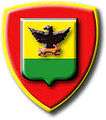 Acqui Division, *1831 (San Giorgio a Cremano)
Acqui Division, *1831 (San Giorgio a Cremano) -
 Aosta Mechanized Brigade, *1831 (Messina)
Aosta Mechanized Brigade, *1831 (Messina) -
 Pinerolo Mechanized Brigade, *1831 (Bari)
Pinerolo Mechanized Brigade, *1831 (Bari) -
 Sassari Mechanized Brigade, *1915 (Sassari)
Sassari Mechanized Brigade, *1915 (Sassari) -
 Infantry School, *1849 (Cesano)
Infantry School, *1849 (Cesano) -
 5th Infantry Regiment Aosta, *1690 (Messina)
5th Infantry Regiment Aosta, *1690 (Messina)
-
 5th Infantry Battalion Col della Berretta,, *1975-1992
5th Infantry Battalion Col della Berretta,, *1975-1992
-
-
 9th Infantry Regiment Bari, *1734 (Bari)
9th Infantry Regiment Bari, *1734 (Bari) -
 17th Infantry Regiment Acqui, *1703 (Capua)
17th Infantry Regiment Acqui, *1703 (Capua)
-
 17th Infantry Battalion San Martino,, *1975-1992
17th Infantry Battalion San Martino,, *1975-1992
-
-
 28th Infantry Regiment Pavia, *1860 (Pesaro)
28th Infantry Regiment Pavia, *1860 (Pesaro) -
 62nd Infantry Regiment Sicilia, *1861 (Catania)
62nd Infantry Regiment Sicilia, *1861 (Catania) -
 66th Infantry Regiment Trieste, *1862 (Forlì)
66th Infantry Regiment Trieste, *1862 (Forlì)
-
 66th Infantry Battalion Valtellina,, *1975-1993
66th Infantry Battalion Valtellina,, *1975-1993
-
-
 80th Infantry Regiment Roma, *1889 (Cassino)
80th Infantry Regiment Roma, *1889 (Cassino) -
 82nd Infantry Regiment Torino, *1884 (Barletta)
82nd Infantry Regiment Torino, *1884 (Barletta) -
 85th Infantry Regiment Verona, *1884 (Verona)
85th Infantry Regiment Verona, *1884 (Verona) -
 151st Infantry Regiment Sassari, *1915 (Cagliari)
151st Infantry Regiment Sassari, *1915 (Cagliari)
-
 151st Infantry Battalion Sette Comuni., *1976-1992
151st Infantry Battalion Sette Comuni., *1976-1992
-
-
 152nd Infantry Regiment Sassari, *1915 (Sassari)
152nd Infantry Regiment Sassari, *1915 (Sassari) -
 235th Infantry Regiment Piceno, *1917 (Ascoli Piceno)
235th Infantry Regiment Piceno, *1917 (Ascoli Piceno)
Inactive units
Inactivated units of the Infantry of the Line:
-
 Mantova Division, *1942-2013
Mantova Division, *1942-2013 -
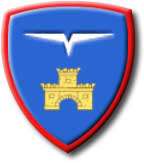 Friuli Air Assault Brigade, *1884-1926, 1960-2013
Friuli Air Assault Brigade, *1884-1926, 1960-2013 -
 Acqui Motorized Brigade, *1859-1926, 1975-1996
Acqui Motorized Brigade, *1859-1926, 1975-1996 -
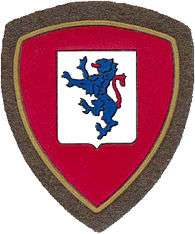 Brescia Mechanized Brigade, *1859–1939, 1975-1991
Brescia Mechanized Brigade, *1859–1939, 1975-1991 -
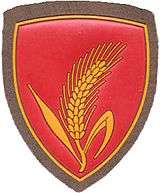 Cremona Motorized Brigade, *1859-1926, 1975-1996
Cremona Motorized Brigade, *1859-1926, 1975-1996 -
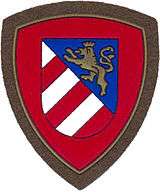 Gorizia Mechanized Brigade, *1975-1996
Gorizia Mechanized Brigade, *1975-1996 -
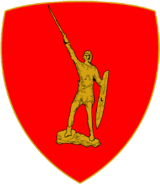 Legnano Mechanized Brigade, *1975-1997
Legnano Mechanized Brigade, *1975-1997 -
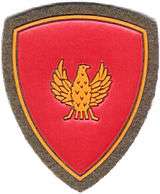 Mantova Mechanized Brigade, *1915-1919, 1986-1997
Mantova Mechanized Brigade, *1915-1919, 1986-1997 -
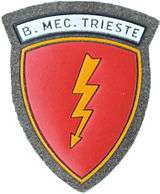 Trieste Mechanized Brigade, *1960-1991
Trieste Mechanized Brigade, *1960-1991 -
 1st Infantry Regiment San Giusto, *1624-2008
1st Infantry Regiment San Giusto, *1624-2008 -
 4th Infantry Regiment Piemonte, *1636-1991
4th Infantry Regiment Piemonte, *1636-1991
-
 4th Infantry Battalion Guastalla, *1975-1991
4th Infantry Battalion Guastalla, *1975-1991
-
-
 7th Infantry Regiment Cuneo, *1701-2001
7th Infantry Regiment Cuneo, *1701-2001 -
 11th Infantry Regiment Casale, *1619-1999
11th Infantry Regiment Casale, *1619-1999 -
 13th Infantry Regiment Pinerolo, *1672-1990
13th Infantry Regiment Pinerolo, *1672-1990
-
 13th Infantry Battalion Valbella, *1975-1990
13th Infantry Battalion Valbella, *1975-1990
-
-
 16th Infantry Regiment Savona, *1815-1991
16th Infantry Regiment Savona, *1815-1991 -
 20th Infantry Regiment Brescia, *1848-1991
20th Infantry Regiment Brescia, *1848-1991
-
 20th Infantry Battalion Monte San Michele, *1975-1991
20th Infantry Battalion Monte San Michele, *1975-1991
-
-
 21st Infantry Regiment Cremona, *1848-2003
21st Infantry Regiment Cremona, *1848-2003
-
 21st Infantry Battalion Alfonsine, *1975-1993
21st Infantry Battalion Alfonsine, *1975-1993
-
-
 22nd Infantry Regiment Cremona, *1848-1990
22nd Infantry Regiment Cremona, *1848-1990
-
 22nd Infantry Battalion Primaro, *1975-1990
22nd Infantry Battalion Primaro, *1975-1990
-
-
 23rd Infantry Regiment Como, *1848-1996
23rd Infantry Regiment Como, *1848-1996 -
 26th Infantry Regiment Bergamo, *1859-1999
26th Infantry Regiment Bergamo, *1859-1999 -
 30th Infantry Regiment Pisa, *1859-1991
30th Infantry Regiment Pisa, *1859-1991 -
 33rd Infantry Regiment Livorno, *1859-1991
33rd Infantry Regiment Livorno, *1859-1991
-
 33rd Infantry Battalion Ardenza, *1975-1991
33rd Infantry Battalion Ardenza, *1975-1991
-
-
 37th Infantry Regiment Ravenna, *1859-1991
37th Infantry Regiment Ravenna, *1859-1991 -
 40th Infantry Regiment Bologna, *1859-1991
40th Infantry Regiment Bologna, *1859-1991 -
 41st Infantry Regiment Modena, *1859-1995
41st Infantry Regiment Modena, *1859-1995 -
 45th Infantry Regiment Reggio, *1859-2003
45th Infantry Regiment Reggio, *1859-2003
-
 45th Infantry Battalion Arborea, *1977-1993
45th Infantry Battalion Arborea, *1977-1993
-
-
 47th Infantry Regiment Ferrara, *1859-2015
47th Infantry Regiment Ferrara, *1859-2015
-
 47th Infantry Battalion Salento, *1977-1997
47th Infantry Battalion Salento, *1977-1997
-
-
 48th Infantry Regiment Ferrara, *1859-1991
48th Infantry Regiment Ferrara, *1859-1991 -
 52nd Infantry Regiment Alpi, *1859-1996
52nd Infantry Regiment Alpi, *1859-1996 -
 53rd Infantry Regiment Umbria, *1861-1993
53rd Infantry Regiment Umbria, *1861-1993 -
 57th Infantry Battalion Abruzzi, *1975-2013, carries the traditions of the 57th Infantry Regiment "Abruzzi", *1861-1943
57th Infantry Battalion Abruzzi, *1975-2013, carries the traditions of the 57th Infantry Regiment "Abruzzi", *1861-1943 -
 59th Infantry Regiment Calabria, *1861-1991
59th Infantry Regiment Calabria, *1861-1991 -
 60th Infantry Regiment Calabria, *1861-2005
60th Infantry Regiment Calabria, *1861-2005
-
 60th Infantry Battalion Col di Lana, *1975-2005
60th Infantry Battalion Col di Lana, *1975-2005
-
-
 63rd Infantry Regiment Cagliari, *1862-1991
63rd Infantry Regiment Cagliari, *1862-1991 -
 67th Infantry Regiment Legnano, *1862-1995
67th Infantry Regiment Legnano, *1862-1995
-
 67th Infantry Battalion Montelungo, *1975-1993
67th Infantry Battalion Montelungo, *1975-1993
-
-
 68th Infantry Regiment Legnano, *1862-1989
68th Infantry Regiment Legnano, *1862-1989
-
 68th Infantry Battalion Palermo, *1975-1989
68th Infantry Battalion Palermo, *1975-1989
-
-
 72nd Infantry Battalion Puglie, *1862-1999
72nd Infantry Battalion Puglie, *1862-1999 -
 73rd Infantry Regiment Lombardia, *1859-1986
73rd Infantry Regiment Lombardia, *1859-1986 -
 75th Infantry Regiment Napoli, *1861-1958
75th Infantry Regiment Napoli, *1861-1958 -
 76th Infantry Regiment Napoli, *1861-1997
76th Infantry Regiment Napoli, *1861-1997 -
 78th Infantry Regiment Lupi di Toscana, *1862-2008
78th Infantry Regiment Lupi di Toscana, *1862-2008 -
 84th Infantry Regiment Venezia, *1884-2000
84th Infantry Regiment Venezia, *1884-2000 -
 87th Infantry Regiment Friuli, *1884-1991
87th Infantry Regiment Friuli, *1884-1991
-
 87th Infantry Battalion Senio, *1975-1991
87th Infantry Battalion Senio, *1975-1991
-
-
 89th Infantry Regiment Salerno, *1884-1991
89th Infantry Regiment Salerno, *1884-1991 -
 91st Infantry Battalion Lucania, *1977-2009
91st Infantry Battalion Lucania, *1977-2009 -
 92nd Infantry Regiment Basilicata, *1884-1996
92nd Infantry Regiment Basilicata, *1884-1996 -
 114th Infantry Regiment Mantova, *1915-1995
114th Infantry Regiment Mantova, *1915-1995
-
 114th Infantry Battalion Moriago, *1975-??
114th Infantry Battalion Moriago, *1975-??
-
-
 120th Infantry Regiment Emilia, *1915-1991
120th Infantry Regiment Emilia, *1915-1991
-
 120th Infantry Battalion Fornovo, *1975-1991
120th Infantry Battalion Fornovo, *1975-1991
-
-
 121st Infantry Regiment Macerata, *1915-2000
121st Infantry Regiment Macerata, *1915-2000 -
 123rd Infantry Battalion Chieti, *1985-2012
123rd Infantry Battalion Chieti, *1985-2012 -
 130th Infantry Regiment Perugia, *1915-1996
130th Infantry Regiment Perugia, *1915-1996 -
 141st Infantry Regiment Catanzaro, *1915-1995
141st Infantry Regiment Catanzaro, *1915-1995 -
 157th Infantry Regiment Liguria, *1915-2004
157th Infantry Regiment Liguria, *1915-2004 -
 225th Infantry Regiment Arezzo, *1916-1999
225th Infantry Regiment Arezzo, *1916-1999 -
 231st Infantry Regiment Avellino, *1916-2004
231st Infantry Regiment Avellino, *1916-2004 -
 244th Infantry Regiment Cosenza, *1917-1992
244th Infantry Regiment Cosenza, *1917-1992
Bersaglieri
History
The Bersaglieri are an elite mechanized corps of the Italian Army.



Active units
Bersaglieri battalions, with the exception of the 1st and 11th battalion are named for battles in which the Bersaglieri participated. The 1st battalion is named for the founder of the Bersaglieri General Alessandro Ferrero La Marmora and the 11th is named for the island of Caprera, where Italy's national hero Giuseppe Garibaldi resided.
-
 Garibaldi Bersaglieri Brigade, *1975 (Caserta)
Garibaldi Bersaglieri Brigade, *1975 (Caserta) -
 1st Bersaglieri Regiment, *1861 (Cosenza)
1st Bersaglieri Regiment, *1861 (Cosenza)
-
 1st Bersaglieri Battalion La Marmora, *1975-1995
1st Bersaglieri Battalion La Marmora, *1975-1995
-
-
 3rd Bersaglieri Regiment, *1861 (Teulada)
3rd Bersaglieri Regiment, *1861 (Teulada)
-
 18th Bersaglieri Battalion Poggio Scanno, *1975-1991
18th Bersaglieri Battalion Poggio Scanno, *1975-1991
-
-
 6th Bersaglieri Regiment, *1861 (Trapani)
6th Bersaglieri Regiment, *1861 (Trapani)
-
 6th Bersaglieri Battalion Palestro, *1975-1991
6th Bersaglieri Battalion Palestro, *1975-1991
-
-
 7th Bersaglieri Regiment, *1871 (Bari)
7th Bersaglieri Regiment, *1871 (Bari)
-
 10th Bersaglieri Battalion Bezzecca
10th Bersaglieri Battalion Bezzecca
-
-
 8th Bersaglieri Regiment, *1871 (Caserta)
8th Bersaglieri Regiment, *1871 (Caserta)
-
 3rd Bersaglieri Battalion Cernaia, *1975-1993
3rd Bersaglieri Battalion Cernaia, *1975-1993
-
-
 11th Bersaglieri Regiment, *1883 (Orcenigo Superiore)
11th Bersaglieri Regiment, *1883 (Orcenigo Superiore)
-
 11th Bersaglieri Battalion Caprera, *1975
11th Bersaglieri Battalion Caprera, *1975
-
Inactive units
Inactivated units of the Alpini Bersaglieri specialty:
-
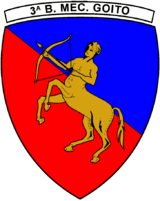 Goito Mechanized Brigade, *1975-1991
Goito Mechanized Brigade, *1975-1991 -
 2nd Bersaglieri Regiment, *1861-2001
2nd Bersaglieri Regiment, *1861-2001
-
 2nd Bersaglieri Battalion Governolo, *1975-2001
2nd Bersaglieri Battalion Governolo, *1975-2001
-
-
 12th Bersaglieri Regiment, *1861-2005, became 6th Bersaglieri Regiment on 15 April 2005
12th Bersaglieri Regiment, *1861-2005, became 6th Bersaglieri Regiment on 15 April 2005
-
 23rd Bersaglieri Battalion Castel di Borgo, *1975-1992, became 6th Bersaglieri Battalion Palestro on 15 April 2005
23rd Bersaglieri Battalion Castel di Borgo, *1975-1992, became 6th Bersaglieri Battalion Palestro on 15 April 2005
-
-
 18th Bersaglieri Regiment, *1861-2005, became 1st Bersaglieri Regiment on 1 January 2005
18th Bersaglieri Regiment, *1861-2005, became 1st Bersaglieri Regiment on 1 January 2005
-
 67th Bersaglieri Battalion Fagare, *1975-1993, became 1st Bersaglieri Battalion La Marmora on 1 January 2005
67th Bersaglieri Battalion Fagare, *1975-1993, became 1st Bersaglieri Battalion La Marmora on 1 January 2005
-
-
 14th Bersaglieri (Training) Battalion Sernaglia, *1975-1989
14th Bersaglieri (Training) Battalion Sernaglia, *1975-1989 -
 26th Bersaglieri Battalion Castelfidardo, *1975-1998
26th Bersaglieri Battalion Castelfidardo, *1975-1998 -
 27th Bersaglieri Battalion Jamiano, *1975-1992, entered the 11th Bersaglieri Regiment in 1992, was replaced by the 11th Bersaglieri Battalion in 1997 and then inactivated
27th Bersaglieri Battalion Jamiano, *1975-1992, entered the 11th Bersaglieri Regiment in 1992, was replaced by the 11th Bersaglieri Battalion in 1997 and then inactivated -
 28th Bersaglieri Battalion Oslavia, *1975-1996
28th Bersaglieri Battalion Oslavia, *1975-1996
Alpini
History
Alpini are the Italian Army's mountain infantry units.
Active units
Alpini battalions are, with the exception of the Monte Cervino battalion named after a mountain, and the Val Brenta, Val Chiese and Val Tagliamento battalions named for alpine valleys, named for cities and villages in the mountainous regions of Italy.
-
 Tridentina Division, *1935 (Bolzano)
Tridentina Division, *1935 (Bolzano) -
 Taurinense Alpine Brigade, *1952 (Turin)
Taurinense Alpine Brigade, *1952 (Turin) -
 Julia Alpine Brigade, *1949 (Udine)
Julia Alpine Brigade, *1949 (Udine) -
 Alpini Training Center, *1934 (Aosta)
Alpini Training Center, *1934 (Aosta)
- Aosta Alpini Battalion, *1887
-
 2nd Alpini Regiment, *1882 (Cuneo)
2nd Alpini Regiment, *1882 (Cuneo)
- Saluzzo Alpini Battalion, *1904
-
 3rd Alpini Regiment, *1882 (Pinerolo)
3rd Alpini Regiment, *1882 (Pinerolo)
- Susa Alpini Battalion, *1887
-
 4th Alpini Parachutist Regiment, *1882 (Verona)
4th Alpini Parachutist Regiment, *1882 (Verona)
- Monte Cervino Alpini Battalion, *1915
-
 5th Alpini Regiment, *1882 (Vipiteno)
5th Alpini Regiment, *1882 (Vipiteno)
- Morbegno Alpini Battalion, *1887
-
 6th Alpini Regiment, *1882 (San Candido)
6th Alpini Regiment, *1882 (San Candido)
- Bassano Alpini Battalion, *1887
-
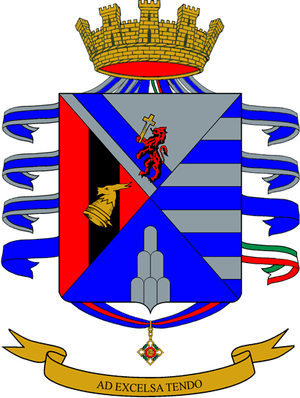 7th Alpini Regiment, *1887 (Belluno)
7th Alpini Regiment, *1887 (Belluno)
- Feltre Alpini Battalion, *1886
-
 8th Alpini Regiment, *1909 (Cividale)
8th Alpini Regiment, *1909 (Cividale)
- Tolmezzo Alpini Battalion, *1908
-
 9th Alpini Regiment, *1919 (L'Aquila)
9th Alpini Regiment, *1919 (L'Aquila)
- L'Aquila Alpini Battalion, *1935
Inactive units
Inactivated units of the Alpini Infantry specialty:
-
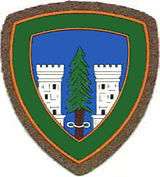 Cadore Alpine Brigade, *1953-1997
Cadore Alpine Brigade, *1953-1997 -
 Orobica Alpine Brigade, *1953-1991
Orobica Alpine Brigade, *1953-1991 -
 1st Alpini Regiment, *1882-1946
1st Alpini Regiment, *1882-1946
- Mondovì Alpini Battalion, *1886-1997
-
 11th Alpini Regiment, *1935-1943, 1992-2002
11th Alpini Regiment, *1935-1943, 1992-2002
- Trento Alpini Battalion, *1920-2002
-
 12th Alpini Regiment, *1935-1936, 1992-1997
12th Alpini Regiment, *1935-1936, 1992-1997
- Pieve di Cadore Alpini Battalion, *1886-1997
-
 14th Alpini Regiment, *1993-2005 commanded the Tolmezzo Battalion until it was transferred to the 8th Alpini Regiment in 2005, then the 14th was inactivated
14th Alpini Regiment, *1993-2005 commanded the Tolmezzo Battalion until it was transferred to the 8th Alpini Regiment in 2005, then the 14th was inactivated -
 15th Alpini Regiment, *1992-1995
15th Alpini Regiment, *1992-1995
- Cividale Alpini Battalion, 1915-1995
-
 16th Alpini Regiment, *1991-2004
16th Alpini Regiment, *1991-2004
- Belluno Alpini Battalion 1910-2004
-
 18th Alpini Regiment, *1997-2004
18th Alpini Regiment, *1997-2004
- Edolo Alpini Battalion, *1886-2004
-
 Tirano Alpini Battalion, *1887-1991
Tirano Alpini Battalion, *1887-1991 -
 Val Tagliamento Alpini Battalion, *1882-1992
Val Tagliamento Alpini Battalion, *1882-1992 -
 Vicenza Alpini Battalion, *1887-1996
Vicenza Alpini Battalion, *1887-1996 -
 Gemona Alpini Battalion, *1887-2005, entered the 8th Alpini Regiment in 1992, was replaced by the Tolmezzo Battalion in 2005 and then inactivated
Gemona Alpini Battalion, *1887-2005, entered the 8th Alpini Regiment in 1992, was replaced by the Tolmezzo Battalion in 2005 and then inactivated - Val Brenta Alpini Battalion, *1882-1986
- Val Chiese Alpini Battalion, *1915-1979
Paracadutisti
History
Paracadutisti are the Italian Army's airborne forces.
Active units
Paratrooper battalions are named for battles, with the exception of the 2nd Battalion named after the location of the first Italian Paratrooper school. Paratrooper regiments carry the name of World War II airborne divisions.
-
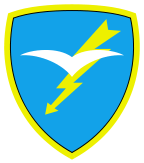 Folgore Parachute Brigade, *1963 (Livorno)
Folgore Parachute Brigade, *1963 (Livorno) -
 Paratrooper Training Center, *1939 (Pisa)
Paratrooper Training Center, *1939 (Pisa) -
 9th Paratrooper Assault Regiment Col Moschin, *1918 (Livorno)
9th Paratrooper Assault Regiment Col Moschin, *1918 (Livorno)
-
 9th Paratrooper Assault Battalion Col Moschin, *1975-1995
9th Paratrooper Assault Battalion Col Moschin, *1975-1995
-
-
 183rd Paratrooper Regiment Nembo, *1943 (Pistoia)
183rd Paratrooper Regiment Nembo, *1943 (Pistoia)
-
 183rd Mechanized Infantry Battalion Nembo, *1975-1991, became the 183rd Paratrooper Battalion Nembo in 1991, entered the 183rd Paratrooper Regiment in 1993 as 1st Paratrooper Battalion Grizzano
183rd Mechanized Infantry Battalion Nembo, *1975-1991, became the 183rd Paratrooper Battalion Nembo in 1991, entered the 183rd Paratrooper Regiment in 1993 as 1st Paratrooper Battalion Grizzano
-
-
 185th Paratrooper Reconnaissance Regiment (LRRP) Folgore, *1941 (Livorno)
185th Paratrooper Reconnaissance Regiment (LRRP) Folgore, *1941 (Livorno)
-
 3rd Paratrooper Battalion "Poggio Rusco", *1975-1998, flag and traditions of the disbanded battalion were given to the 185th Paratrooper Reconnaissance Regiment in 2013
3rd Paratrooper Battalion "Poggio Rusco", *1975-1998, flag and traditions of the disbanded battalion were given to the 185th Paratrooper Reconnaissance Regiment in 2013
-
-
 186th Paratrooper Regiment Folgore, *1941 (Siena)
186th Paratrooper Regiment Folgore, *1941 (Siena)
-
 5th Paratrooper Battalion "El Alamein", *1975-1992
5th Paratrooper Battalion "El Alamein", *1975-1992
-
-
 187th Paratrooper Regiment Folgore, *1941 (Livorno)
187th Paratrooper Regiment Folgore, *1941 (Livorno)
-
 2nd Paratrooper Battalion "Tarquinia", *1975-1992
2nd Paratrooper Battalion "Tarquinia", *1975-1992
-
Lagunari
Lagunari are the Italian Army's amphibious forces.
-
 Lagunari Regiment Serenissima, *1951 (Venice)
Lagunari Regiment Serenissima, *1951 (Venice)
Cavalry Corps


Cavalleria di Linea (Cavalry of the Line)
Active units
Cavalry of the Line regiments are named for cities in Italy. The only exception to this rule are the 1st and 3rd regiments named for regions in France, 2nd regiment named for a region in Italy, 8th regiment named for the Battle of Montebello and 19th regiment, which was given no honorific name.
-
 Pozzuolo del Friuli Brigade, *1835-1938, 1959-today (Bologna)
Pozzuolo del Friuli Brigade, *1835-1938, 1959-today (Bologna) -
 Cavalry School, *1849 (Lecce)
Cavalry School, *1849 (Lecce) -
 1st Cavalry Regiment Nizza Cavalleria (Dragoons), *1690 (Pinerolo)
1st Cavalry Regiment Nizza Cavalleria (Dragoons), *1690 (Pinerolo) -
 2nd Cavalry Regiment Piemonte Cavalleria (Dragoons), *1692 (Trieste)
2nd Cavalry Regiment Piemonte Cavalleria (Dragoons), *1692 (Trieste) -
 3rd Cavalry Regiment Savoia Cavalleria (Dragoons), *1692 (Grosseto)
3rd Cavalry Regiment Savoia Cavalleria (Dragoons), *1692 (Grosseto) -
 4th Cavalry Regiment Genova Cavalleria (Dragoons), *1682 (Palmanova)
4th Cavalry Regiment Genova Cavalleria (Dragoons), *1682 (Palmanova) -
 5th Cavalry Regiment Lancieri di Novara (Lancers), *1828 (Codroipo)
5th Cavalry Regiment Lancieri di Novara (Lancers), *1828 (Codroipo) -
 6th Cavalry Regiment Lancieri di Aosta (Lancers), *1774 (Palermo)
6th Cavalry Regiment Lancieri di Aosta (Lancers), *1774 (Palermo) -
 8th Cavalry Regiment Lancieri di Montebello (Lancers), *1859 (Rome)
8th Cavalry Regiment Lancieri di Montebello (Lancers), *1859 (Rome) -
 19th Cavalry Regiment Cavalleggeri Guide (Chevau-légers), *1859 (Salerno)
19th Cavalry Regiment Cavalleggeri Guide (Chevau-légers), *1859 (Salerno)
Inactive units
Inactivated units of the Line Cavalry specialty:
-
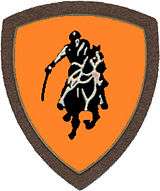 Vittorio Veneto Armored Brigade, *1975-1991
Vittorio Veneto Armored Brigade, *1975-1991 -
 7th Cavalry Regiment Lancieri di Milano, *1859-1989
7th Cavalry Regiment Lancieri di Milano, *1859-1989 -
 9th Cavalry Regiment Lancieri di Firenze, *1753-1995
9th Cavalry Regiment Lancieri di Firenze, *1753-1995 -
 12th Cavalry Regiment Cavalleggeri di Saluzzo, *1848-1991
12th Cavalry Regiment Cavalleggeri di Saluzzo, *1848-1991 -
 14th Cavalry Regiment Cavalleggeri di Alessandria, *1850-1979
14th Cavalry Regiment Cavalleggeri di Alessandria, *1850-1979 -
 15th Cavalry Regiment Cavalleggeri di Lodi, *1859-1995
15th Cavalry Regiment Cavalleggeri di Lodi, *1859-1995 -
 28th Cavalry Regiment Cavalleggeri di Treviso, *1909-1991
28th Cavalry Regiment Cavalleggeri di Treviso, *1909-1991
Carristi (Tank Units)
Active units
Tank battalions are named for members of the speciality, who were awarded the Gold Medal of Military Valour for outstanding service in combat.
-
 Ariete Armored Brigade, *1986 (Pordenone)
Ariete Armored Brigade, *1986 (Pordenone) -
 1st Armored (Training) Regiment, *1936 (Teulada)
1st Armored (Training) Regiment, *1936 (Teulada) -
 4th Tank Regiment, *1941 (Persano)
4th Tank Regiment, *1941 (Persano)
-
 20th Tank Battalion M.O. Pentimalli, *1935
20th Tank Battalion M.O. Pentimalli, *1935
-
-
 31st Tank Regiment, *1937 (Altamura)
31st Tank Regiment, *1937 (Altamura)
-
 1st Tank Battalion M.O. Cracco, *1937
1st Tank Battalion M.O. Cracco, *1937
-
-
 32nd Tank Regiment, *1938 (Spilimbergo)
32nd Tank Regiment, *1938 (Spilimbergo)
-
 3rd Tank Battalion M.O. Galas, *1936
3rd Tank Battalion M.O. Galas, *1936
-
-
 132nd Tank Regiment, *1941 (Cordenons)
132nd Tank Regiment, *1941 (Cordenons)
-
 8th Tank Battalion M.O. Secchiaroli, *1936
8th Tank Battalion M.O. Secchiaroli, *1936
-
Inactive units
-
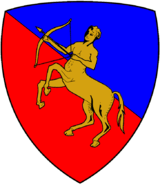 Centauro Armored Brigade, *1986-2002
Centauro Armored Brigade, *1986-2002 -
 Mameli Armored Brigade, *1975-1991
Mameli Armored Brigade, *1975-1991 -
 Manin Armored Brigade, *1975-1986 changed name to Ariete Armored Brigade in 1986
Manin Armored Brigade, *1975-1986 changed name to Ariete Armored Brigade in 1986 -
 Curtatone Armored Brigade, *1975-1986 changed name to Centauro Armored Brigade in 1986
Curtatone Armored Brigade, *1975-1986 changed name to Centauro Armored Brigade in 1986 -
 2nd Tank Regiment, *1936-1996
2nd Tank Regiment, *1936-1996
-
 22nd Tank Battalion M.O. Piccinini, *1935-1996
22nd Tank Battalion M.O. Piccinini, *1935-1996
-
-
 3rd Armored Regiment, *1936-1975
3rd Armored Regiment, *1936-1975
-
 9th Armored Battalion M.O. Butera, *1941-1995, became the Logistic Support Unit Monte Romano in 1995
9th Armored Battalion M.O. Butera, *1941-1995, became the Logistic Support Unit Monte Romano in 1995
-
-
 33rd Tank Regiment, *1939-2001
33rd Tank Regiment, *1939-2001
-
 11th Tank Battalion M.O. Calzecchi, *1941-2001
11th Tank Battalion M.O. Calzecchi, *1941-2001
-
-
 62nd Armored Regiment, *1992-2001, was the 62nd Infantry Regiment, became the 62nd Tank Regiment in 1996, became the 62nd Infantry Regiment Sicilia in 2001
62nd Armored Regiment, *1992-2001, was the 62nd Infantry Regiment, became the 62nd Tank Regiment in 1996, became the 62nd Infantry Regiment Sicilia in 2001
-
 62nd Armored Battalion M.O. Jero, *1939-2001, merged with the 62nd Mechanized Infantry Battalion and entered the 62nd Armored Regiment in 1992
62nd Armored Battalion M.O. Jero, *1939-2001, merged with the 62nd Mechanized Infantry Battalion and entered the 62nd Armored Regiment in 1992
-
-
 63rd Tank Regiment, *1992-1995
63rd Tank Regiment, *1992-1995
-
 63rd Tank Battalion M.O. Fioritto, *1939-1995
63rd Tank Battalion M.O. Fioritto, *1939-1995
-
-
 67th Armored Regiment, *1993-1995, was the 67th Infantry Regiment Legnano
67th Armored Regiment, *1993-1995, was the 67th Infantry Regiment Legnano
-
 4th Tank Battalion M.O. Passalacqua, *1940-1995
4th Tank Battalion M.O. Passalacqua, *1940-1995
-
-
 131st Tank Regiment, *1941-2013
131st Tank Regiment, *1941-2013
- 31st Tank Battalion M.O. Andreani, *1947-2013
-
 133rd Tank Regiment, *1941-1995
133rd Tank Regiment, *1941-1995
-
 60th Tank Battalion M.O. Locatelli, *1941-1995
60th Tank Battalion M.O. Locatelli, *1941-1995
-
-
 5th Tank Battalion M.O. Chiamenti, *1936-1992
5th Tank Battalion M.O. Chiamenti, *1936-1992 -
 6th Tank Battalion M.O. Scapuzzi, *1939-1996
6th Tank Battalion M.O. Scapuzzi, *1939-1996 -
 7th Tank Battalion M.O. Di Dio, *1940-1991
7th Tank Battalion M.O. Di Dio, *1940-1991 -
 10th Tank Battalion M.O. Bruno, *1941-1991
10th Tank Battalion M.O. Bruno, *1941-1991 -
 13th Tank Battalion M.O. Pascucci, *1942-1989
13th Tank Battalion M.O. Pascucci, *1942-1989 -
 19th Armored Battalion M.O. Tumiati 1942-1991
19th Armored Battalion M.O. Tumiati 1942-1991 -
 101st Tank Battalion M.O. Zappalà, *1941-1991
101st Tank Battalion M.O. Zappalà, *1941-1991
Artillery Corps


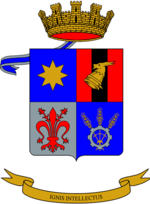
Artiglieria Terrestre (Field Artillery)
Active units
Each Field Artillery regiment consists of a HQ platoon, a target acquisition battery, a logistic support battery and an artillery group with either a command platoon and four firing batteries with 8x self-propelled howitzers each, or a command platoon and four firing batteries with 6x FH70 towed howitzers each.
-
 Horse Artillery Regiment Voloire, *1831 (Milano)
Horse Artillery Regiment Voloire, *1831 (Milano) -
 1st Mountain Artillery Regiment, *1887 (Fossano)
1st Mountain Artillery Regiment, *1887 (Fossano)
-
 Mountain Artillery Group Aosta, *1910-1992
Mountain Artillery Group Aosta, *1910-1992
-
-
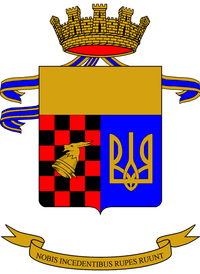 3rd Mountain Artillery Regiment, *1902 (Tolmezzo)
3rd Mountain Artillery Regiment, *1902 (Tolmezzo)
-
 Mountain Artillery Group Conegliano, *1909-1992
Mountain Artillery Group Conegliano, *1909-1992
-
-
 5th Heavy Artillery Regiment Superga, *1850 (Portogruaro)
5th Heavy Artillery Regiment Superga, *1850 (Portogruaro)
-
 5th Heavy Field Artillery Group Superga, *1976-1991
5th Heavy Field Artillery Group Superga, *1976-1991
-
-
 8th Self-propelled Artillery Regiment Pasubio, *1696 (Persano)
8th Self-propelled Artillery Regiment Pasubio, *1696 (Persano)
-
 8th Self-propelled Artillery Group Pasubio, *1975-1992
8th Self-propelled Artillery Group Pasubio, *1975-1992
-
-
 21st Self-propelled Artillery Regiment Trieste, *1888 (Foggia)
21st Self-propelled Artillery Regiment Trieste, *1888 (Foggia)
-
 21st Artillery Group Romagna, *1975-1993
21st Artillery Group Romagna, *1975-1993
-
-
 24th Self-propelled Artillery Regiment Peloritani, *1888 (Messina)
24th Self-propelled Artillery Regiment Peloritani, *1888 (Messina)
-
 24th Field Artillery Group Peloritani, *1975-1992
24th Field Artillery Group Peloritani, *1975-1992
-
-
 52nd Self-propelled Artillery Regiment Torino, *1916 (Vercelli)
52nd Self-propelled Artillery Regiment Torino, *1916 (Vercelli)
-
 52nd Field Artillery Group Venaria, *1975-1992
52nd Field Artillery Group Venaria, *1975-1992
-
-
 132nd Self-propelled Artillery Regiment Ariete, *1939 (Maniago)
132nd Self-propelled Artillery Regiment Ariete, *1939 (Maniago)
-
 132nd Heavy Field Artillery Group Rovereto, in Casarsa della Delizia, *1975-1993
132nd Heavy Field Artillery Group Rovereto, in Casarsa della Delizia, *1975-1993
-
-
 185th Parachute Artillery Regiment Folgore, *1941 (Bracciano)
185th Parachute Artillery Regiment Folgore, *1941 (Bracciano)
-
 185th Paratroopers Field Artillery Group Viterbo, *1975-1992
185th Paratroopers Field Artillery Group Viterbo, *1975-1992
-
Inactive units
-
 3rd Missile Brigade Aquileia, *1959-1991
3rd Missile Brigade Aquileia, *1959-1991 -
 1st Field Artillery (Training) Group Cacciatore delle Alpi, *1976-1999
1st Field Artillery (Training) Group Cacciatore delle Alpi, *1976-1999 -
 1st Heavy Artillery (Reserve) Group Adige, *1975-31 July 1983
1st Heavy Artillery (Reserve) Group Adige, *1975-31 July 1983 -
 2nd Field Artillery Group Potenza, *1920-1995
2nd Field Artillery Group Potenza, *1920-1995 -
 3rd Self-propelled Field Artillery Group Pastrengo, *1975-1991
3rd Self-propelled Field Artillery Group Pastrengo, *1975-1991 -
 3rd Heavy Artillery Regiment Volturno *1992-2001
3rd Heavy Artillery Regiment Volturno *1992-2001
-
 3rd Missile Group Volturno *1955-1992
3rd Missile Group Volturno *1955-1992
-
-
 4th Heavy Field Artillery Group Pusteria, *1920-1992
4th Heavy Field Artillery Group Pusteria, *1920-1992 -
 9th Heavy Field Artillery Regiment Rovigo, *1992-1995
9th Heavy Field Artillery Regiment Rovigo, *1992-1995
-
 9th Heavy Artillery Group Rovigo, *1926-1992
9th Heavy Artillery Group Rovigo, *1926-1992
-
-
 9th Field Artillery Group Foggia, *1920-1996
9th Field Artillery Group Foggia, *1920-1996 -
 10th Self-propelled Field Artillery Group Avisio, *1939-1986
10th Self-propelled Field Artillery Group Avisio, *1939-1986 -
 11th Field Artillery Regiment Legnano, *1884-1991
11th Field Artillery Regiment Legnano, *1884-1991
-
 11th Field Artillery Group Monferrato, *1975-1991
11th Field Artillery Group Monferrato, *1975-1991
-
-
 11th Field Artillery Regiment Teramo, *1920-2001
11th Field Artillery Regiment Teramo, *1920-2001 -
 12th Self-propelled Field Artillery Group Capua, *1884-1991
12th Self-propelled Field Artillery Group Capua, *1884-1991 -
 13th Artillery Regiment Granatieri di Sardegna, *1888-1995
13th Artillery Regiment Granatieri di Sardegna, *1888-1995
-
 13th Field Artillery Group Magliana, *1975-1992
13th Field Artillery Group Magliana, *1975-1992
-
-
 14th Field Artillery Group Murge, *1888-30 June 1991
14th Field Artillery Group Murge, *1888-30 June 1991 -
 19th Self-propelled Field Artillery Group Rialto, in Sequals, *1975-1993
19th Self-propelled Field Artillery Group Rialto, in Sequals, *1975-1993 -
 20th Self-propelled Field Artillery Group Piave, *???-March 1991
20th Self-propelled Field Artillery Group Piave, *???-March 1991 -
 27th Heavy Self-propelled Artillery Regiment Marche, *1912-1995
27th Heavy Self-propelled Artillery Regiment Marche, *1912-1995
-
 27th Heavy Self-propelled Artillery Group Marche, *1985-1992
27th Heavy Self-propelled Artillery Group Marche, *1985-1992
-
-
 28th Self-propelled Field Artillery Group Livorno, *1912-1995
28th Self-propelled Field Artillery Group Livorno, *1912-1995 -
 33rd Field Artillery Regiment Acqui, *1915-2013
33rd Field Artillery Regiment Acqui, *1915-2013
-
 33rd Heavy Field Artillery Group Terni, *1975-1993
33rd Heavy Field Artillery Group Terni, *1975-1993
-
-
 35th Field Artillery Group Riolo, 1915-1991
35th Field Artillery Group Riolo, 1915-1991 -
 46th Self-propelled Field Artillery Group Trento, *1975-1993
46th Self-propelled Field Artillery Group Trento, *1975-1993 -
 47th Field Artillery Group Gargano, *1915-1981
47th Field Artillery Group Gargano, *1915-1981 -
 48th Field Artillery Regiment Taro, *1915-1995
48th Field Artillery Regiment Taro, *1915-1995 -
 108th Heavy Field Artillery Group Cosseria, *1941-31 October 1986
108th Heavy Field Artillery Group Cosseria, *1941-31 October 1986 -
 120th Self-propelled Field Artillery Group Po, *1942-1991
120th Self-propelled Field Artillery Group Po, *1942-1991 -
 131st Field Artillery Regiment Centauro, *1939-2001
131st Field Artillery Regiment Centauro, *1939-2001
-
 131st Heavy Field Artillery Group Vercelli, *1975-1992
131st Heavy Field Artillery Group Vercelli, *1975-1992 -
 9th Self-propelled Field Artillery Group Brennero, *1863-1992, merged with 131st Heavy Field Artillery Group to form the 131st Field Artillery Regiment
9th Self-propelled Field Artillery Group Brennero, *1863-1992, merged with 131st Heavy Field Artillery Group to form the 131st Field Artillery Regiment
-
-
 155th Heavy Field Artillery Group Emilia, in Udine, *1941-1992
155th Heavy Field Artillery Group Emilia, in Udine, *1941-1992 -
 184th Field Artillery Regiment Nembo, *1942-1996
184th Field Artillery Regiment Nembo, *1942-1996
-
 184th Heavy Field Artillery Group Filottrano, *1976-1993
184th Heavy Field Artillery Group Filottrano, *1976-1993
-
-
 205th Heavy Field Artillery Group Lomellina, *1940-1991
205th Heavy Field Artillery Group Lomellina, *1940-1991
Mountain Artillery:
-
 2nd Mountain Artillery Regiment, *1909-2015
2nd Mountain Artillery Regiment, *1909-2015
-
 Mountain Artillery Group Vicenza, *1909-1992
Mountain Artillery Group Vicenza, *1909-1992
-
-
 5th Mountain Artillery Regiment, *1935-2001
5th Mountain Artillery Regiment, *1935-2001
-
 Mountain Artillery Group Bergamo, *1910-1992
Mountain Artillery Group Bergamo, *1910-1992
-
-
 6th Mountain Artillery Regiment, *1941-1995
6th Mountain Artillery Regiment, *1941-1995
-
 Mountain Artillery Group Lanzo, *1935-1992
Mountain Artillery Group Lanzo, *1935-1992
-
-
 Mountain Artillery Group Agordo, in Bassano del Grappa, *1953-1991
Mountain Artillery Group Agordo, in Bassano del Grappa, *1953-1991 - Mountain Artillery Group Asiago, in Toblach, *1952-1991
-
 Mountain Artillery Group Belluno, *1909-1989
Mountain Artillery Group Belluno, *1909-1989 - Mountain Artillery Group Pinerolo, *1926-1991
-
 Mountain Artillery Group Sondrio, *1953-1989
Mountain Artillery Group Sondrio, *1953-1989 -
 Mountain Artillery Group Udine, *1915-1995
Mountain Artillery Group Udine, *1915-1995
Target Acquisition units:
-
 4th Artillery Specialist Group Bondone, *1956-1992, renamed 3rd Artillery Specialist Group Bondone in 1986, Flag and traditions of the 3rd Heavy Field Artillery Regiment.
4th Artillery Specialist Group Bondone, *1956-1992, renamed 3rd Artillery Specialist Group Bondone in 1986, Flag and traditions of the 3rd Heavy Field Artillery Regiment. - 5th Artillery Specialist Group Medea, *1956-21 March 1991, named Artillery Specialist Group Mantova 1976-1986
- 6th Artillery Specialist Group Montello, *1976-30 June 1991, named Artillery Specialist Group Folgore 1976-1986
- 7th Artillery Specialist Group Casarsa, *1976-31 January 1991, named Artillery Specialist Group Ariete 1976-1986
- 12th Artillery Specialist Group Biella, *1975-29 September 1992, named Artillery Specialist Group Centauro 1975-1986
- 30th Artillery Specialist Group Brianza, *1975-28 February 1991, for III Army Corps, but only the 3rd battery was active as part of the Horse Artillery Regiment in Milan
Artiglieria Controaerei (Anti-aircraft Artillery)
Active units
Each Air-defense Artillery regiment consists of a HQ battery, a logistic support battery and an air-defense group.
-
 Air-defense Artillery Command, *1941 (Sabaudia)
Air-defense Artillery Command, *1941 (Sabaudia) -
 Air-defense Artillery Training Regiment (Sabaudia)
Air-defense Artillery Training Regiment (Sabaudia) -
 4th Anti-aircraft Artillery Regiment Peschiera, *1930 (Mantova)
4th Anti-aircraft Artillery Regiment Peschiera, *1930 (Mantova) -
 17th Anti-aircraft Artillery Regiment Sforzesca, *1888 (Sabaudia)
17th Anti-aircraft Artillery Regiment Sforzesca, *1888 (Sabaudia) -
 121st Anti-aircraft Artillery Regiment Ravenna, *1941 (Bologna)
121st Anti-aircraft Artillery Regiment Ravenna, *1941 (Bologna)
Inactive units
-
 1st Anti-aircraft Artillery Regiment, *1992-1996
1st Anti-aircraft Artillery Regiment, *1992-1996 -
 3rd Anti-aircraft Artillery Regiment Firenze, *1992-2001
3rd Anti-aircraft Artillery Regiment Firenze, *1992-2001 -
 5th Anti-aircraft Artillery Regiment Pescara, *1964-2014
5th Anti-aircraft Artillery Regiment Pescara, *1964-2014 -
 8th Anti-aircraft Artillery Regiment, *1992-1995
8th Anti-aircraft Artillery Regiment, *1992-1995
-
 8th Field Artillery Group Marmore, *1986-1992
8th Field Artillery Group Marmore, *1986-1992
-
-
 18th Anti-aircraft Artillery Regiment, *1992-1997
18th Anti-aircraft Artillery Regiment, *1992-1997
-
 18th Self-propelled Field Artillery Group Gran Sasso, *1976-1981
18th Self-propelled Field Artillery Group Gran Sasso, *1976-1981
-
Special Artillery Units
-
 7th NBC-defense Regiment Cremona, *1860 (Civitavecchia)
7th NBC-defense Regiment Cremona, *1860 (Civitavecchia)
-
 7th Field Artillery Group Adria, *1975-1992, elevated in 1992 to 7th Field Artillery Regiment Cremona, in 1995 the regiment moved to Civitavecchia, where it changed configuration to NBC-defense regiment in 1998.
7th Field Artillery Group Adria, *1975-1992, elevated in 1992 to 7th Field Artillery Regiment Cremona, in 1995 the regiment moved to Civitavecchia, where it changed configuration to NBC-defense regiment in 1998.
-
-
 41st ISTAR Electronic Warfare Regiment Cordenons, *1915 (Sora)
41st ISTAR Electronic Warfare Regiment Cordenons, *1915 (Sora) -
 13th HUMINT Battalion Aquileia, *1960-1993, re-raised in 2005 (Anzio)
13th HUMINT Battalion Aquileia, *1960-1993, re-raised in 2005 (Anzio)
Engineer Corps
History
The Engineer Corps was founded on 11 June 1775 as the "Royal Corps of Engineers" ("Corpo Reale degli Ingegneri") of the army of the Kingdom of Piedmont-Sardinia. With the integration of the engineer units of the Italian states conquered during the Second Italian War of Independence the Corps was elevated on 11 January 1861 to a service branch of the Army and became the "Arma del Genio". In 1915 when Italy entered World War I the Royal Italian Army fielded six regiments and two battalions:
- 1st Sapper Regiment in Pavia
- 2nd Sapper Regiment in Casale Monferrato
- 3rd Telegraph Engineer Regiment in Florence
- 4th Bridging Engineer Regiment in Piacenza
- 5th Mining Engineer Regiment in Turin
- 6th Railroad Engineer Regiment in Turin
- Specialist Engineer Battalion
- Aviation Engineer Battalion (transferred to the Corpo Aeronautico Militare at the outbreak of hostilities)
During the war the Engineer Branch expanded and created new types of units:
- Sapper Companies were mostly employed to build the trenches along the Isonzo front - expanded from 43x to 236x companies
- Flamethrower Companies - 9x were raised
- Telegraph Companies tasked with managing the military's communications - expanded from 24x to 139x companies
- Telephone Companies tasked with laying and maintaining phone cables along the front - 57x companies were raised
- Bridging Companies - expanded from 12x to 26x companies
- Mining Companies tasked with building defensive positions in the Alps - expanded from 20x to 53x companies
- Lagunari Companies tasked with providing transportation in the Marano lagoon and on Lake Garda and Lake Idro.
Besides these also transport, ropeway, photography and poison gas companies were raised during the war.
In May 1940 when Italy entered World War II the branch fielded 18x engineer regiments, which contained a mix of sappers and signalers, and two mining, two bridging and one railroad engineer regiment. During the war each division received a mixed engineer battalion providing sappers and signalers. After the war the branch was rebuild as part of the Italian Army, fielding three pioneer, one bridging, one railroads and one fortification engineer battalion, along with mixed engineer battalions for the army's divisions and sapper companies for the army's brigades. In 1953 the signal units were split from the engineer branch to form their own service branch.
In 1975 all battalions of the engineer branch were given the name of lakes and rivers in Italy, while the companies of the branch continued to carry the name of the brigade they were subordinated too. The only exception to this naming rule were the three battalions of the 2nd Bridge Engineer Regiment and the two battalions of the Railroad Engineer Regiment. In 1975 the army fielded two mining, one sapper and 12x pioneer engineer battalions, along with 25x engineer companies in the army's brigades.
After the end of the Cold War the army renamed all battalions as regiments, although the composition of the units didn't change. In 1993 the brigade's engineer companies were merged with the brigade's signal battalions to create Command and Tactical Support Battalions. In 2001 the engineer companies of the reaming brigades were merged with the armies engineer battalions and each brigade received an engineer regiment.
Active units
Today the service branch is divided into four specialties: Engineers ("Guastatori"), Pioneers ("Pionieri"), Bridge Engineers ("Pontieri") and Railroad Engineers ("Ferrovieri"). All engineer battalions are named for rivers and lakes in Italy.
-
 Railway Engineer Regiment, *1895 (Castel Maggiore)
Railway Engineer Regiment, *1895 (Castel Maggiore) -
 2nd Bridge Engineer Regiment, *1883 (Piacenza)
2nd Bridge Engineer Regiment, *1883 (Piacenza) -
 2nd Engineer Regiment, *1860 (Trento)
2nd Engineer Regiment, *1860 (Trento)
-
 2nd Mining Engineer Battalion Iseo, *1975-1995
2nd Mining Engineer Battalion Iseo, *1975-1995
-
-
 3rd Engineer Regiment, *1926 (Udine)
3rd Engineer Regiment, *1926 (Udine)
-
 3rd Sapper Battalion Verbano, *1976-1992
3rd Sapper Battalion Verbano, *1976-1992
-
-
 4th Engineer Regiment, *1922 (Palermo)
4th Engineer Regiment, *1922 (Palermo)
-
 51st Sapper Battalion Simeto, *1982-1992, became 4th Engineer Regiment in 1992 and received flag of the 4th Engineer Regiment in 1995
51st Sapper Battalion Simeto, *1982-1992, became 4th Engineer Regiment in 1992 and received flag of the 4th Engineer Regiment in 1995
-
-
 5th Engineer Regiment, *1895-1976, re-raised 2003 (Macomer)
5th Engineer Regiment, *1895-1976, re-raised 2003 (Macomer)
-
 5th Engineer Battalion Bolsena, *1976-2001, in 2001 the battalion was renamed as 8th Paratroopers Engineer Battalion Folgore, so traditions and flag of the battalion could be used to raise the 5th Engineer Regiment in Sardinia.
5th Engineer Battalion Bolsena, *1976-2001, in 2001 the battalion was renamed as 8th Paratroopers Engineer Battalion Folgore, so traditions and flag of the battalion could be used to raise the 5th Engineer Regiment in Sardinia.
-
-
 6th Pioneer Regiment, *1926 (Rome)
6th Pioneer Regiment, *1926 (Rome)
-
 6th Engineer Battalion Trasimeno, *1976-1993
6th Engineer Battalion Trasimeno, *1976-1993
-
-
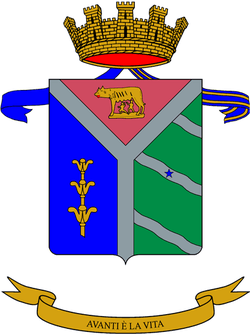 8th Paratroopers Engineer Regiment, *1926-1995, regiment re-raised in 2004 (Legnago)
8th Paratroopers Engineer Regiment, *1926-1995, regiment re-raised in 2004 (Legnago)
- 8th Paratroopers Engineer Battalion Folgore *2001-2004, raised by changing the name of the 5th Paratroopers Engineer Battalion Bolsena
-
 10th Engineer Regiment, *1920 (Cremona)
10th Engineer Regiment, *1920 (Cremona)
-
 3rd Engineer Battalion Lario, *1976-1993
3rd Engineer Battalion Lario, *1976-1993
-
-
 11th Engineer Regiment, *1928 (Foggia)
11th Engineer Regiment, *1928 (Foggia)
-
 132nd Engineer Battalion Livenza, *1976-1993
132nd Engineer Battalion Livenza, *1976-1993
-
-
 21st Engineer Regiment, *1937 (Caserta)
21st Engineer Regiment, *1937 (Caserta)
-
 21st Engineer Battalion Timavo, *1975-1993
21st Engineer Battalion Timavo, *1975-1993
-
-
 32nd Engineer Regiment, *1940 (Turin)
32nd Engineer Regiment, *1940 (Turin)
-
 32nd Engineer Battalion *2002-2004
32nd Engineer Battalion *2002-2004
-
Inactive units
Inactivated units of the Engineer branch:
-
 1st Engineer Regiment, *1860-1975, then active 1993-1995
1st Engineer Regiment, *1860-1975, then active 1993-1995
- 104th Engineer Battalion Torre, *1976-1986, flag of the 7th Engineer Regiment
-
 131st Engineer Battalion Ticino, *1976-1993, flag of the 9th Engineer Regiment
131st Engineer Battalion Ticino, *1976-1993, flag of the 9th Engineer Regiment -
 184th Engineer Battalion Santerno 1976-1995, became 8th Engineer Regiment in 1992, regiment and battalion inactivated in 1995
184th Engineer Battalion Santerno 1976-1995, became 8th Engineer Regiment in 1992, regiment and battalion inactivated in 1995
Signal Corps
History

The Signal branch of the army began as a speciality of the army's engineer branch, when in 1883 two telegraph battalions were raised and joined the 3rd Engineer Regiment. During World War I the speciality expanded rapidly and the war's end fielded 139x Telegraph Companies and 57x Telephone Companies. After the war a second Telegraph Regiment was raised and 26 Telegraph battalions were assigned to various commands of the army. During World War II the Signal Speciality raised a hundreds of units to join the various divisions of the Regio Esercito.
After the war the specialty was finally split from the Engineer Branch and on 16 May 1953 became a autonomous specialty of the army. Over the years the specialty grew and on 30 December 1997 it was finally elevated to a service branch of the army, with two specialities: Signal specialists and Electronic Warfare Specialists.
Active units
If not specified otherwise all Signal battalions below were activated in 1975. All signal battalions, with the exception of the 45th, 46th, 47th, 51st and 184th, were named after Italian mountain passes. The 45th and 46th were named after volcanoes, while the 47th and 184th were named after mountain massifs and the 51st kept the name of the Cold War Legnano division it once belonged to.
-
.jpg) Signal Brigade *2007 (Anzio)
Signal Brigade *2007 (Anzio) -
 RISTA-IEW ISTAR & Electronic Warfare Brigade *2001 (Anzio)
RISTA-IEW ISTAR & Electronic Warfare Brigade *2001 (Anzio) -
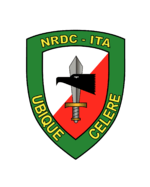 NATO Rapid Deployable Corps (NRDC-IT) Support Brigade *2001 (Milan)
NATO Rapid Deployable Corps (NRDC-IT) Support Brigade *2001 (Milan) -
 Signal and IT School (Rome)
Signal and IT School (Rome) -
 1st Signal Regiment, *1919 (Milan)
1st Signal Regiment, *1919 (Milan)
-
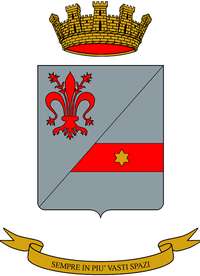 2nd Alpine Signal Regiment (Alpini), *1926 (Bolzano)
2nd Alpine Signal Regiment (Alpini), *1926 (Bolzano)
-
 3rd Signal Regiment, *1883 (Rome)
3rd Signal Regiment, *1883 (Rome)
-
 10th Signal Battalion Lanciano, raised 1975, elevated to 3rd Signal Regiment in 1993
10th Signal Battalion Lanciano, raised 1975, elevated to 3rd Signal Regiment in 1993 -
 43rd Signal Battalion Abetone, raised 1975, elevated to 43rd Signal Regiment in 1993, regiment disbanded in 1998 and the battalion entered the 3rd Signal Regiment the next day
43rd Signal Battalion Abetone, raised 1975, elevated to 43rd Signal Regiment in 1993, regiment disbanded in 1998 and the battalion entered the 3rd Signal Regiment the next day -
 47th Signal Battalion Gennargentu, raised 1996, entered 3rd Signal Regiment in 2000
47th Signal Battalion Gennargentu, raised 1996, entered 3rd Signal Regiment in 2000
-
-
 7th Signal Regiment, *1918 (Sacile)
7th Signal Regiment, *1918 (Sacile)
-
 11th Signal Regiment, *1940 (Civitavecchia)
11th Signal Regiment, *1940 (Civitavecchia)
-
 32nd Signal Regiment, *1953 (Padova)
32nd Signal Regiment, *1953 (Padova)
-
 32nd Signal Battalion Valles, raised 1975, elevated to 32nd Signal Regiment in 1992
32nd Signal Battalion Valles, raised 1975, elevated to 32nd Signal Regiment in 1992 -
 41st Signal Battalion Fréjus, raised 1975, elevated to 41st Signal Regiment in 1993, regiment disbanded in 1998 and the battalion entered the 32nd Signal Regiment the next day
41st Signal Battalion Fréjus, raised 1975, elevated to 41st Signal Regiment in 1993, regiment disbanded in 1998 and the battalion entered the 32nd Signal Regiment the next day
-
-
 33rd Electronic Warfare Regiment Falzarego, *2002 (Treviso)
33rd Electronic Warfare Regiment Falzarego, *2002 (Treviso)
-
 33rd Electronic Warfare Battalion Falzarego, raised 1975, elevated to 33rd Electronic Warfare Regiment in 2002
33rd Electronic Warfare Battalion Falzarego, raised 1975, elevated to 33rd Electronic Warfare Regiment in 2002
-
-
 44th Signal Support Regiment, *1957 (Rome)
44th Signal Support Regiment, *1957 (Rome)
-
 44th Signal Battalion Penne, raised 1976, elevated to 44th Signal Regiment in 1993, became 44th Signal Support Regiment in 1997
44th Signal Battalion Penne, raised 1976, elevated to 44th Signal Regiment in 1993, became 44th Signal Support Regiment in 1997
-
-
 46th Signal Regiment, *1997 (Palermo)
46th Signal Regiment, *1997 (Palermo)
-
 45th Signal Battalion Vulture, raised 1975, elevated to 45th Signal Regiment in 1993, regiment disbanded in 2000 and the battalion entered the 46th Signal Regiment the next day
45th Signal Battalion Vulture, raised 1975, elevated to 45th Signal Regiment in 1993, regiment disbanded in 2000 and the battalion entered the 46th Signal Regiment the next day -
 46th Signal Battalion Mongibello, raised 1976, elevated to 46th Signal Regiment in 1997
46th Signal Battalion Mongibello, raised 1976, elevated to 46th Signal Regiment in 1997
-
-
 184th Signal Support Regiment, *1944 (Treviso)
184th Signal Support Regiment, *1944 (Treviso)
-
 184th Signal Battalion Cansiglio, raised 1976, disbanded in 1993, re-raised in 1998 as 184th Signal Support Regiment
184th Signal Battalion Cansiglio, raised 1976, disbanded in 1993, re-raised in 1998 as 184th Signal Support Regiment
-
-
 232nd Signal Regiment, *1939-1991, activated anew in 2004 (Avellino)
232nd Signal Regiment, *1939-1991, activated anew in 2004 (Avellino)
- 51st Signal Battalion Legnano, raised in 2004
-
 232nd Signal Battalion Fadalto, raised 1975, disbanded 1991, re-raised and entered the 232nd Signal Regiment in 2015
232nd Signal Battalion Fadalto, raised 1975, disbanded 1991, re-raised and entered the 232nd Signal Regiment in 2015
Inactive units
Inactivated units of the Signal branch:
-
 Maneuver Support Signal Brigade, *1998-2007
Maneuver Support Signal Brigade, *1998-2007 -
 National Support Signal Brigade *2000-2007
National Support Signal Brigade *2000-2007 -
 9th Electronic Warfare Battalion Rombo, *1976 - inactivated on 20 January 1998
9th Electronic Warfare Battalion Rombo, *1976 - inactivated on 20 January 1998 - 13th Signal Battalion Mauria, *1975 - inactivated on 30 November 1991
Transport and Material Corps
Active units
-
 Aosta Logistic Regiment (Messina)
Aosta Logistic Regiment (Messina) -
 Ariete Logistic Regiment, *2015 (Remanzacco)
Ariete Logistic Regiment, *2015 (Remanzacco)
-
 Folgore Logistic Regiment, *2013 (Pisa)
Folgore Logistic Regiment, *2013 (Pisa)
-
 6th Maneuver Logistic Regiment, *2001-2013
6th Maneuver Logistic Regiment, *2001-2013
-
-
 Friuli Logistic Regiment, *2013 (Budrio)
Friuli Logistic Regiment, *2013 (Budrio)
-
 6th Transport Regiment, *2001-2013
6th Transport Regiment, *2001-2013
-
 Friuli Logistic Battalion, *1975-2001
Friuli Logistic Battalion, *1975-2001
-
-
-
 Garibaldi Logistic Regiment, *2013 (Persano)
Garibaldi Logistic Regiment, *2013 (Persano)
-
 10th Maneuver Regiment, *2001-2013
10th Maneuver Regiment, *2001-2013
-
 Persano Logistic Battalion, *1991-2001
Persano Logistic Battalion, *1991-2001
-
 Garibaldi Logistic Battalion, *1976-1991
Garibaldi Logistic Battalion, *1976-1991
-
-
-
-
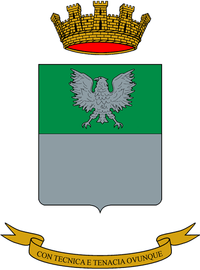 Julia Logistic Regiment, *2013 (Meran)
Julia Logistic Regiment, *2013 (Meran)
-
 Pinerolo Logistic Regiment, *2013 (Bari)
Pinerolo Logistic Regiment, *2013 (Bari)
-
 10th Transport Regiment, *2001-2013
10th Transport Regiment, *2001-2013
-
 Pinerolo Logistic Battalion, joined the regiment in 2001
Pinerolo Logistic Battalion, joined the regiment in 2001 -
 10th Logistic Support Regiment, *1998-2001
10th Logistic Support Regiment, *1998-2001
-
 10th Transport Battalion Appia, *1987-1998
10th Transport Battalion Appia, *1987-1998
-
-
-
-
 Sassari Logistic Regiment, *2013 (Teulada)
Sassari Logistic Regiment, *2013 (Teulada) -
 Taurinense Logistic Regiment, *2013 (Rivoli)
Taurinense Logistic Regiment, *2013 (Rivoli)
-
 1st Maneuver Regiment, *2001-2013
1st Maneuver Regiment, *2001-2013
-
 Taurinense Logistic Battalion, joined the regiment in 2001
Taurinense Logistic Battalion, joined the regiment in 2001 -
 1st Logistic Support Regiment Monviso, *1998-2001
1st Logistic Support Regiment Monviso, *1998-2001
-
 1st Transport Battalion Monviso, *1990-1998
1st Transport Battalion Monviso, *1990-1998
-
-
-
-
 Joint Forces Maneuver Regiment (Rome)
Joint Forces Maneuver Regiment (Rome)
-
 10th Inter-arms Transport Battalion Salaria, *???-???
10th Inter-arms Transport Battalion Salaria, *???-???
-
-
 1st Transport Regiment (Bellinzago Novarese)
1st Transport Regiment (Bellinzago Novarese)
-
 Centauro Logistic Battalion, *???-???
Centauro Logistic Battalion, *???-???
-
-
 8th Transport Regiment Casilina, (Rome)
8th Transport Regiment Casilina, (Rome) -
 11th Transport Regiment Flaminia, (Rome)
11th Transport Regiment Flaminia, (Rome) -
 33rd Tactical and Logistic Support Regiment, *2002 (Solbiate Olona)
33rd Tactical and Logistic Support Regiment, *2002 (Solbiate Olona)
-
 33rd Logistic Maneuver Regiment Ambrosiano, *1993-2002
33rd Logistic Maneuver Regiment Ambrosiano, *1993-2002
-
 33rd Logistic Maneuver Battalion Ambrosiano, *1986-1993
33rd Logistic Maneuver Battalion Ambrosiano, *1986-1993
-
 3rd Logistic Maneuver Battalion Piemonte, *1982-1986
3rd Logistic Maneuver Battalion Piemonte, *1982-1986 -
 "Centauro" Division Maneuver Battalion, *1975-1986
"Centauro" Division Maneuver Battalion, *1975-1986 -
 3rd Transport Battalion Fluvia, *1975-1986
3rd Transport Battalion Fluvia, *1975-1986
-
-
-
Inactive units
- 13th Logistic Battalion Aquileia, in Portogruaro
-
 Acqui Logistic Battalion, in L'Aquila
Acqui Logistic Battalion, in L'Aquila -
 Ariete Logistic Battalion, in Maniago
Ariete Logistic Battalion, in Maniago -
 Brescia Logistic Battalion, in Montorio Veronese
Brescia Logistic Battalion, in Montorio Veronese -
 Cadore Logistic Battalion, in Belluno
Cadore Logistic Battalion, in Belluno -
 Cremona Logistic Battalion, in Venaria Reale
Cremona Logistic Battalion, in Venaria Reale -
 Goito Logistic Battalion, in Monza
Goito Logistic Battalion, in Monza -
 Granatieri di Sardegna Logistic Battalion in Civitavecchia
Granatieri di Sardegna Logistic Battalion in Civitavecchia -
 Gorizia Logistic Battalion, in Gradisca d'Isonzo
Gorizia Logistic Battalion, in Gradisca d'Isonzo -
 Julia Logistic Battalion, in Udine
Julia Logistic Battalion, in Udine -
 Legnano Logistic Battalion, in Presezzo
Legnano Logistic Battalion, in Presezzo -
 Mameli Logistic Battalion, in Vacile
Mameli Logistic Battalion, in Vacile -
 Mantova Logistic Battalion, in Tricesimo
Mantova Logistic Battalion, in Tricesimo -
 Pozzuolo del Friuli Logistic Battalion, in Visco
Pozzuolo del Friuli Logistic Battalion, in Visco -
 Trieste Logistic Battalion, in Budrio
Trieste Logistic Battalion, in Budrio -
 Tridentina Logistic Battalion, in Vahrn
Tridentina Logistic Battalion, in Vahrn -
 Vittorio Veneto Logistic Battalion, in Cervignano del Friuli
Vittorio Veneto Logistic Battalion, in Cervignano del Friuli -
 5th Maneuver Logistic Battalion Euganeo, in Treviso
5th Maneuver Logistic Battalion Euganeo, in Treviso - 50th Maneuver Logistic Battalion Carnia (former 5th Maneuver Logistic Battalion "Postumia"), in Pordenone
-
 7th Mixed Transport Battalion, in Florence
7th Mixed Transport Battalion, in Florence -
 11th Mixed Transport Battalion Etnea, in Palermo
11th Mixed Transport Battalion Etnea, in Palermo - 12th Mixed Transport Battalion, in Cagliari
-
 14th Mixed Transport Battalion Flavia, in Montorio Veronese
14th Mixed Transport Battalion Flavia, in Montorio Veronese
Army Aviation Corps
History
In May 1951 the first aviation unit was created at the army's Artillery School in Rome. The first planes put in service were the Piper L21 A. By 1952 the army created four Light Plane Sections to support the four corps. In 1954 the first AB 47 helicopters arrived. On 1 June 1957 the training unit was moved to Viterbo and became the Army Light Aviation Instruction Center. By 1964 four squadrons of helicopters and 19 sections of light airplanes existed and the service was named Light Aviation of the Army ("Aviazione Leggera dell'Esercito", abbreviated as ALE)
By 1974 the L21 planes had been replaced by Cessna L19E planes, while the only helicopter in service was the AB 206 utility helicopter. With the army reform in 1975 the many light plane sections and helicopter sections were renamed squadrons and merged to form squadrons groups, equally in size to a battalion. The army also created four Army Light Aviation Groupings, equally in size to a regiment, for the three army corpses and the general staff. Squadrons groups were given the names of planets and constellations, while the groupings were given then names of stars.
After the Cold War the army reduced the number of squadrons groups, renamed the groupings to regiments and dropped the "Light" from the specialties name.
Active units

Aviation regiments are named for stars, while Aviation Support Regiments are named for constellations. All squadrons groups (with the exception of "Giove" and "Mercurio") are named for constellations:
-
 Army Aviation Brigade, *1996 (Viterbo)
Army Aviation Brigade, *1996 (Viterbo) -
 Army Aviation Training Center, *1951 (Viterbo)
Army Aviation Training Center, *1951 (Viterbo)
-
 1st Army Aviation Regiment Antares, *1976 (Viterbo)
1st Army Aviation Regiment Antares, *1976 (Viterbo)
-
 2nd Army Aviation Regiment Sirio, *1996 (Lamezia Terme)
2nd Army Aviation Regiment Sirio, *1996 (Lamezia Terme)
- 21st Squadrons Group Orsa Maggiore
- 30th Squadrons Group Pegaso
-
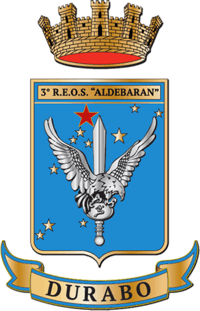 3rd Special Operations Helicopter Regiment Aldebaran, *1976-1998, re-activated in 2015 (Viterbo)
3rd Special Operations Helicopter Regiment Aldebaran, *1976-1998, re-activated in 2015 (Viterbo)
- 26th Squadrons Group Giove
-
 4th Army Aviation Regiment Altair, *1976 (Bolzano)
4th Army Aviation Regiment Altair, *1976 (Bolzano)
-
 5th Army Aviation Regiment Rigel, *1976 (Casarsa della Delizia)
5th Army Aviation Regiment Rigel, *1976 (Casarsa della Delizia)
- 27th Squadrons Group Mercurio
- 49th Squadrons Group Capricorno
-
 7th Army Aviation Regiment Vega, *1996 (Rimini)
7th Army Aviation Regiment Vega, *1996 (Rimini)
-
 1st Army Aviation Support Regiment Idra, *1953 (Bracciano)
1st Army Aviation Support Regiment Idra, *1953 (Bracciano) -
 2nd Army Aviation Support Regiment Orione, *1957 (Bologna)
2nd Army Aviation Support Regiment Orione, *1957 (Bologna) -
 3rd Army Aviation Support Regiment Aquila, *1965 (Orio al Serio)
3rd Army Aviation Support Regiment Aquila, *1965 (Orio al Serio) -
 4th Army Aviation Support Regiment Scorpione, *1976 (Viterbo)
4th Army Aviation Support Regiment Scorpione, *1976 (Viterbo)
Inactive units
Inactivated units of the Aviation speciality:
- 12th Squadrons Group Gru - inactivated on 30 April 1998
- 20th Squadrons Group Andromeda
- 23rd Squadrons Group Eridano
- 24th Squadrons Group Orione
- 44th Squadrons Group Fenice - inactivated on 4 July 1996
- 46th Squadrons Group Sagittario
- 47th Squadrons Group Levrieri
- 51st Squadrons Group Leone - inactivated on 4 November 2002
- 55th Squadrons Group Dragone
See also
- See also: Italian Armed Forces
- See also: Italian Army
- See also: Structure of the Italian Army